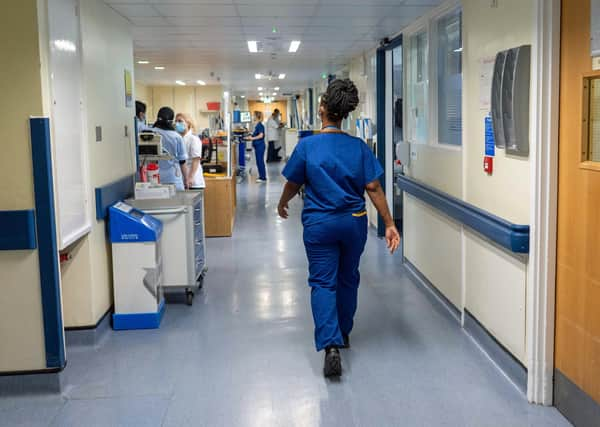The Salford Royal Trust: all the key numbers for the NHS Trust in December


Almost 150,000 patients were waiting for routine treatment at the Salford Royal Trust in December, figures show.
The figures come as new research suggests waiting lists across England are unlikely to shrink this year.
Advertisement
Hide AdAdvertisement
Hide AdNHS England figures show 148,547 patients were waiting for non-urgent elective operations or treatment at Salford Royal NHS Foundation Trust at the end of December – up slightly from 147,756 in November, and 127,386 in December 2021.
Of those, 17,351 (12%) had been waiting for longer than a year.
The median waiting time from referral at an NHS Trust to treatment at the Salford Royal Trust was 19 weeks at the end of December – up from 18 weeks in November.
Nationally, 7 million people were waiting to start treatment at the end of December.
Advertisement
Hide AdAdvertisement
Hide AdA new report by the Institute for Fiscal Studies think tank suggests waiting lists are unlikely to fall significantly in 2023.
The IFS said while "real progress" had been made in eliminating waits of two years or more, it would require a "truly remarkable" increase in treatment rates for waiting lists to drop.
Max Warner, a research economist at the think tank, said: "To turn things around would require unprecedented double-digit growth in treatment volumes over the next two years."
Separate figures show 1.5 million patients in England were waiting for a key diagnostic test in December – a fall from 1.6 million in November.
Advertisement
Hide AdAdvertisement
Hide AdAt the Salford Royal Trust, 14,835 patients were waiting for one of 15 standard tests, such as an MRI scan, non-obstetric ultrasound or gastroscopy at this time.
Of them, 3,006 (20%) had been waiting for at least six weeks.
The Society for Acute Medicine, which represents doctors, called the figures "shocking", but said they would not come as a surprise for those working in front line care.
Dr Tim Cooksley, president of the organisation, said: “Urgent workforce plans are needed to stop the current haemorrhaging of staff and attract skilled staff who have left back into the profession.
Advertisement
Hide AdAdvertisement
Hide Ad“A sustainable long-term urgent and emergency care plan is also needed to engender a belief in patients and staff that the situation can improve,” he added.
Other figures show cancer patients at the Salford Royal Trust are not being seen quickly enough.
The NHS states 85% of cancer patients urgently referred by a GP should start treatment within 62 days.
But NHS England data shows just 52% of patients urgently referred by the NHS who received cancer treatment at the Salford Royal Trust in December began treatment within two months of their referral.
Advertisement
Hide AdAdvertisement
Hide AdThat was up from both 45% in November, and 50% in December 2021 last year.
NHS England’s national medical director Professor Sir Stephen Powis said the NHS is making "good progress" toward virtually eliminating 18-month waits by April, even despite recent strike action.
“As ever it is vital that people do not put off seeking care and come forward for treatment – using 111 online for non-life-threatening care, as well as local pharmacies or general practice, or dialling 999 in a life-threatening emergency.”